This book describes the route from Clarbeston Road via Haverfordwest to Johnston, and the branches from there to Milford Haven and Neyland, and is the final volume in a series of books describing the railways of West Wales.
Published in July 2022 by Pen & Sword and written by former railwayman John Hodge, this hardback book measures around 28.6 cm x 22.4 cm, is 128 pages long, and has 21 colour and 255 black and white illustrations and maps. It has a published price of £25, and at the time of writing it can be obtained online from both Pen & Sword for £18.75 and Amazon for £21.23.
This is the latest and final book in the West Wales Railways series from publishers Pen & Sword and follows previous books describing the lines from Llanelli west to Carmarthen, Carmarthen to Fishguard Harbour, and the branch from Whitland to Pembroke Dock.
This volume is mainly a photographic study of the line from Clarbeston Road to Johnston and the branches from there to Milford Haven and Neyland. The lines covered by this book were once thriving arteries, with the branch to Neyland now closed, but the future of Milford Haven seems assured thanks to the development of several oil refineries in the area.
The book has an introduction and three chapters. A clear map shows the line had just two intermediate stations, one at Haverfordwest and the other at Johnston where the branches to Milford Haven and Neyland diverged, as well as branches to several oil refineries.
At one time Milford Haven was one of the country’s major stations for fish traffic, and the Introduction includes an interesting explanation of the complexity of sending fish traffic to multiple destinations, and how trains were assembled with the vans of fish in the right order according to their destination. However, it would have been more appropriate for that information to be included in the Milford Haven chapter.
Each chapter has a brief description of the line’s infrastructure, followed by extensive photographs. Chapter Two includes descriptions of Clarbeston Road, Haverfordwest, and Johnston stations, as well as a description of Crundale level crossing, which was controlled by a ground frame. I can only assume that it has been included because of the lack of suitable items of railway interest on this part of the line.
Today both Clarbeston Road and Johnston are unstaffed stations, whilst Haverfordwest is only staffed during weekday mornings. It would have been useful to see photographs of the stations as they are today to compare with the numerous photographs of them in former times.
Chapter Three covers the 8-mile branch from Johnston to Milford Haven as well as branches to Esso’s oil refinery at Herbrandston, Gulf’s at Waterston, and Amoco/Murco/Puma’s at Robeston. Milford Haven is the only station on the branch, and a good selection of images illustrates the station area, and unlike the other chapters, includes the latest diesel units providing services on the line.
The original station building at Milford Haven has been demolished and the waiting facilities replaced by a covered shelter, but the photos of the current layout concentrate more on the trains rather than the station itself.
The pages below are typical of the book, with each chapter having a description of the relevant stations followed by a large selection of photographs of the station in steam days.
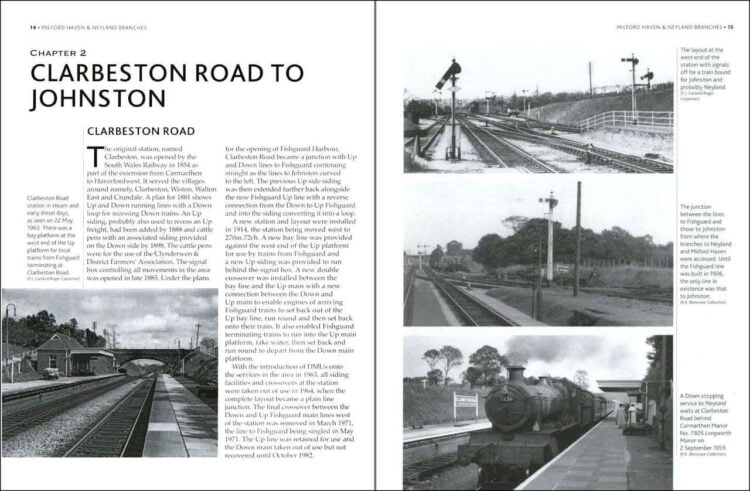
Until the development of the oil refineries around Milford Haven, the branch from Johnston was very much an archetypal branch line, with passenger trains consisting of a small tank engine and a few carriages as seen in the images below. The services on the branch today are unrecognisable, with block oil trains that are some of the heaviest trains on the British railway network.
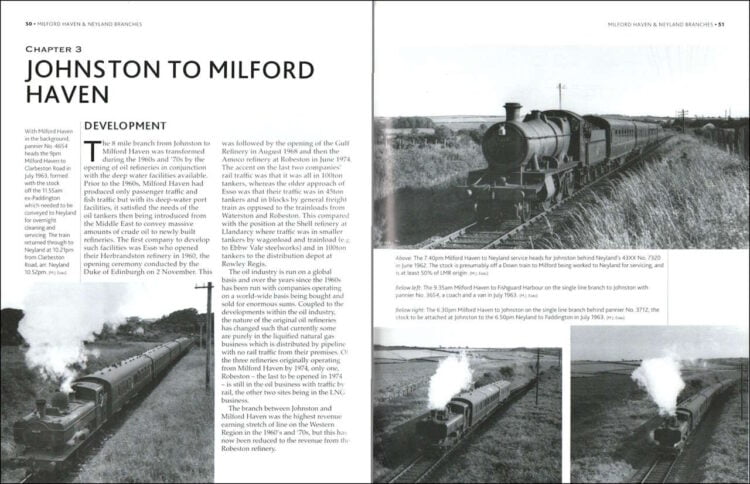
There are several oil refinery branches described in the Milford Haven chapter. The photographs below are typical of the block trains of oil tanks before the advent of the more powerful Class 60s, which have recently been supplanted on some workings by even more powerful pairs of Class 66s.
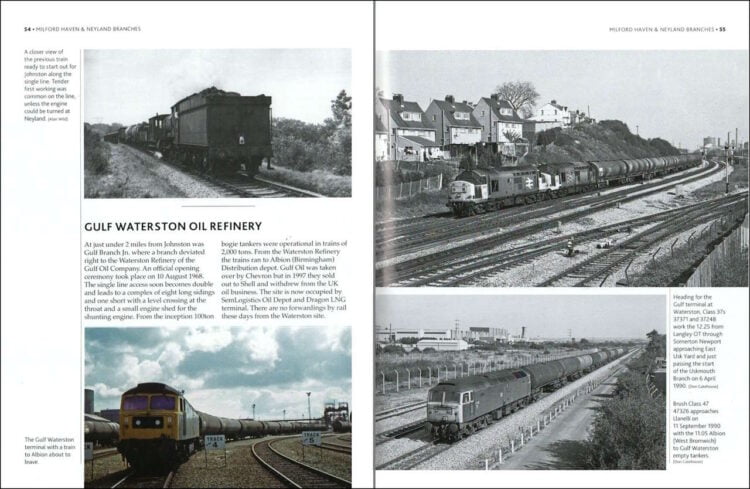
In steam days Neyland always appeared to be the more important branch, as it was the destination of several long-distance trains and was the location of a major locomotive depot whose allocation included several 4-6-0 Hall, Manor, and County Class locomotives for longer-distance work.
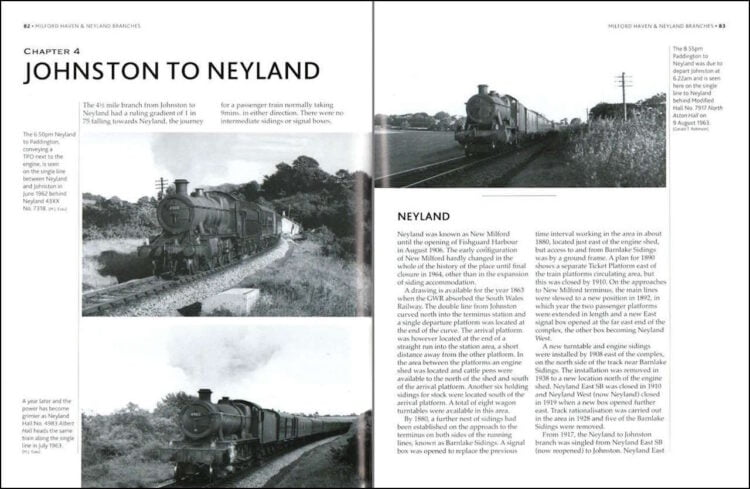
With five pages filled with photographs of County Class locomotives such as the ones below, it would appear that they dominated Neyland depot’s allocation. Although individual locomotives varied, there was an average of four of the class at any one time, and their allocation to Neyland came about after they were found to be suitable for services out of Paddington.
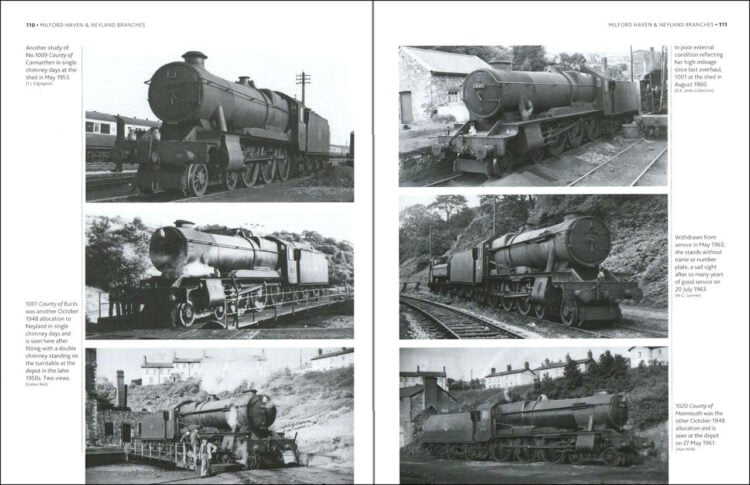
The book is available to purchase from Amazon and from Pen and Sword.
We would like to thank Pen and Sword for providing us with a copy of the book for review.





Responses
John Hodge is sadly no longer with us. I suspect he may have been struggling to complete this title as he hadn’t been in the best of health for a while. It would be good if one of the railway magazines featured a proper tribute to a very capable railwayman and author, if they’ve not already done that.